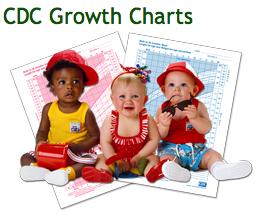|
|
Developmental Biology - Cell Senescence/Aging
Aging Cells Lead to Neurodegeneratve Diseases
Buck research discovers how cell aging leads to the degeneration of nerve cells, a finding significant to studies of both dementia and brain cancer...
Although a link has been established between chronic inflammation and neurodegenerative diseases, there are many open questions about how cells age, a time when cells stop dividing under stress while still spewing out a mix of inflammatory proteins, causing pathologies in our brains.
Publishing in PLOS ONE, researchers at the Buck Institute report how senescence in astrocytes, the most abundant cell type in the brain, leads to damaging "excitotoxicity" in cortical neurons involved in our memory.
Research led by Chandani Limbad PhD, found that cellular senescence in astrocytes suppresses glutamate transporters, which are vital for glutamate stability in the brain.
Glutamate is one of the most important neuro-transmitters in the brain. But in excess, it causes neurons to fire repeatedly - leading to their death.
An FDA-approved drug for Alzheimer's disease, reduces glutamate toxicity for up to a year in patients suffering from moderate to severe disease, but evidence that it might slow its cause is weak.
"This study gets to the underlying mechanisms that drive this toxicity. We have identified targets that may be of more use in drug development."
Judith Campisi PhD, Professor, Buck Institute for Research on Aging, Novato, California; Lawrence Berkeley National Laboratory, Berkeley, California, United States of America and senior author.
Cell Senescence One of the Hottest Topics in Aging Research
Success in the Campisi lab and others around the world has given rise to companies and research projects aimed at developing either senolytics, drugs that clear senescent cells, or senomorphics, drugs that suppress the senescence-associated inflammation.
Earlier work in the Campisi lab in collaboration with the Buck Institute's Andersen lab showed that clearing senescent cells prevented Parkinson's in a mouse model of the disease.
Campisi believes most of the research aimed at understanding characteristics of cell aging involves human fibroblast cells which are cells in connective tissue that produce collagen and other fibers. Their work in astrocytes should be a wake-up call to anyone studying Alzheimer's disease, argues Campisi.
"What is commonly termed non-familial Alzheimer's disease should probably more accurately be termed age-related dementia.
If you see five spontaneous Alzheimer's patients, all present differently. Some have personality changes, others don't. Memory is affected differently in each patient. Some people lose motor control, others don't.
These findings highlight aging as the biggest risk factor for almost all neurodegeneration — this is where research should be focused."
Judith Campisi PhD.
The research involved unbiased RNA sequencing of transcripts expressed by senescent and non-senescent astrocyte cells. They found changes in the expression of more than 5,000 genes whose functions are important in cancer, infectious diseases and neurological diseases.
"Cellular senescence is a double-edged sword and the current state of senescence-associated research is messy. While senescence leads to chronic inflammation, which promotes cancer and neuro-degeneration, it also acts as a tumor suppressor. There are many factors secreted by aging astrocytes. We think some of them could even be explored as a way to treat glioblastoma."
Pierre-Yves Desprez PhD, Buck Institute for Research on Aging, Novato, California; California Pacific Medical Center, San Francisco, California, United States of America and research co-author.
Glioblastoma is an aggressive form of brain cancer that strikes astrocytes.
Abstract
Neurodegeneration is a major age-related pathology. Cognitive decline is characteristic of patients with Alzheimer’s and related dementias and cancer patients after chemo- or radio-therapies. A recently emerged driver of these and other age-related pathologies is cellular senescence, a cell fate that entails a permanent cell cycle arrest and pro-inflammatory senescence-associated secretory phenotype (SASP). Although there is a link between inflammation and neurodegenerative diseases, there are many open questions regarding how cellular senescence affects neurodegenerative pathologies. Among the various cell types in the brain, astrocytes are the most abundant. Astrocytes have proliferative capacity and are essential for neuron survival. Here, we investigated the phenotype of primary human astrocytes made senescent by X-irradiation, and identified genes encoding glutamate and potassium transporters as specifically downregulated upon senescence. This down regulation led to neuronal cell death in co-culture assays. Unbiased RNA sequencing of transcripts expressed by non-senescent and senescent astrocytes confirmed that glutamate homeostasis pathway declines upon senescence. Our results suggest a key role for cellular senescence, particularly in astrocytes, in excitotoxicity, which may lead to neurodegeneration including Alzheimer’s disease and related dementias.
Authors
Chandani Limbad, Tal Ronnen Oron, Fatouma Alimirah, Albert R. Davalos, Tara E. Tracy, Li Gan, Pierre-Yves Desprez and Judith Campisi.
Acknowledgments
Other Buck Institute researchers involved in the study include Tal Ronnen Oron, Fatouma Alimirah, Albert R. Davalos, and Tara E. Tracy. Li Gan, from the Gladstone Institute of Neurological Disease was also a contributor.
This work was supported by National Institutes of Health grants AG009909 and AG017242.
Judith Campisi is a scientific co-founder and shareholder of Unity Biotechnology Inc., which has licencing rights to certain patents filed by the Buck Institute.
Return to top of page.
| |
|
Feb 5 2020 Fetal Timeline Maternal Timeline News
 Neurons (BLUE) copy.png) Senescent Astrocytes (RED) compromise Neuron survival in the presence of glutamate. CREDIT
Chandani Limbad PhD, Buck Institute for Research on Aging, Novato, California, USA.
|

 Neurons (BLUE) copy.png)

